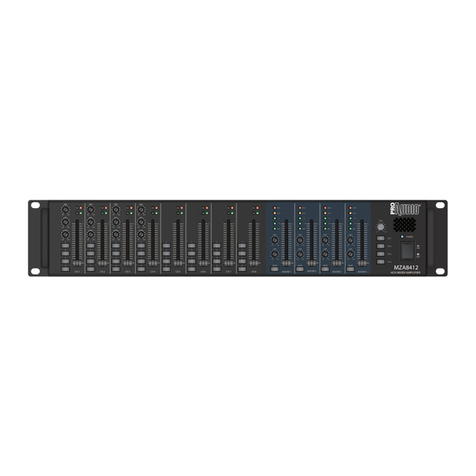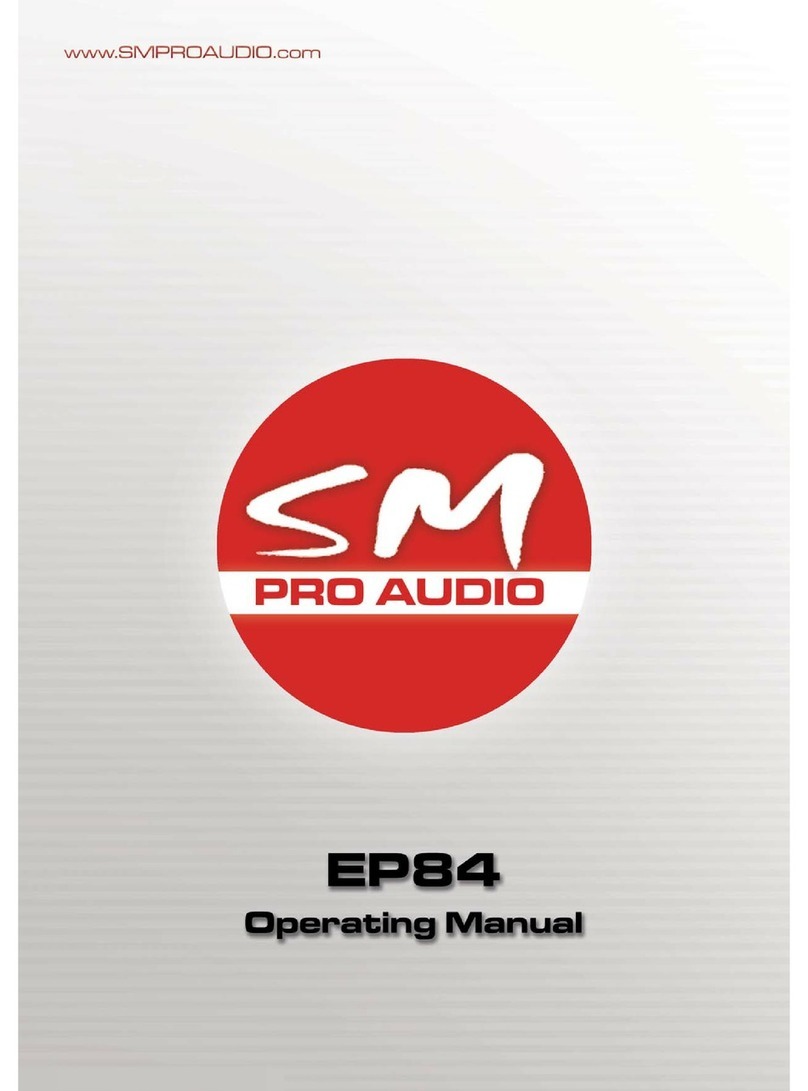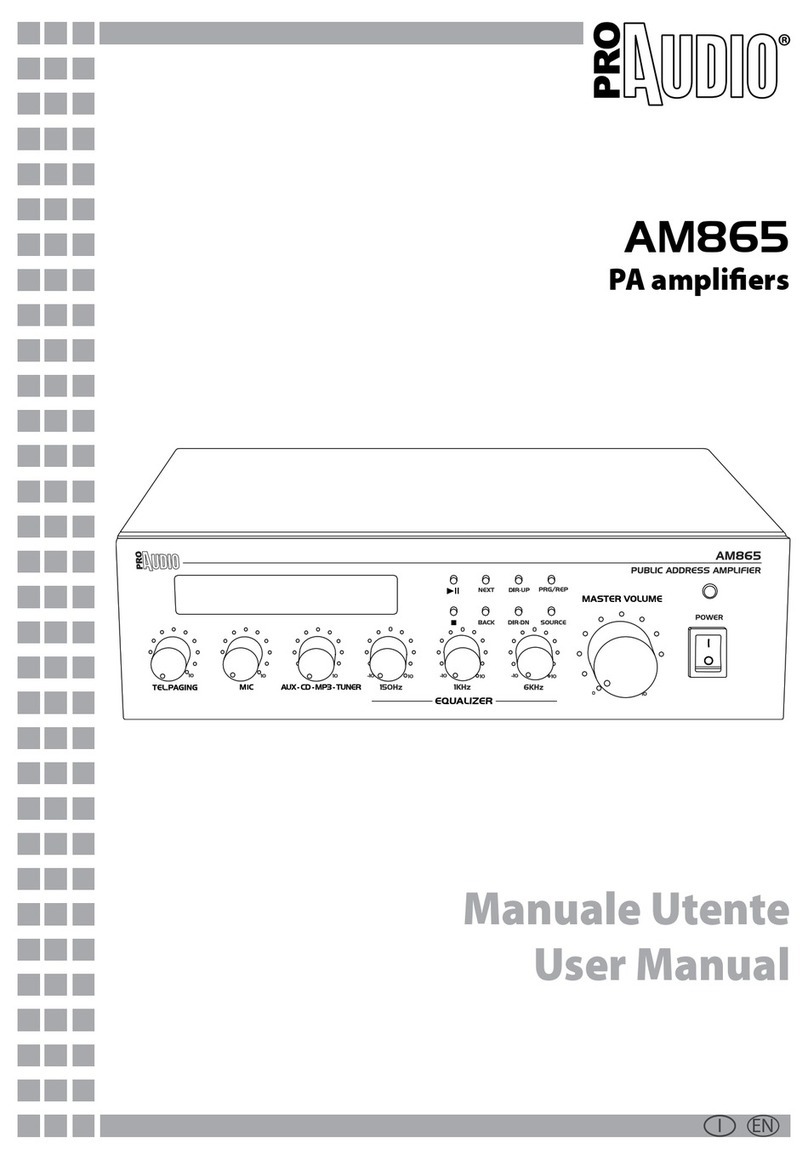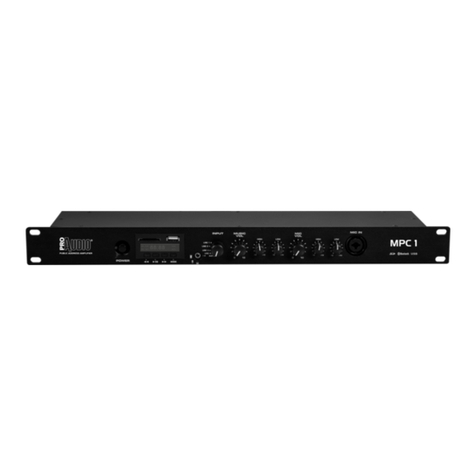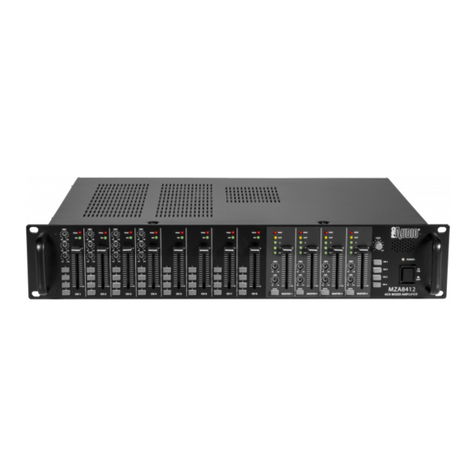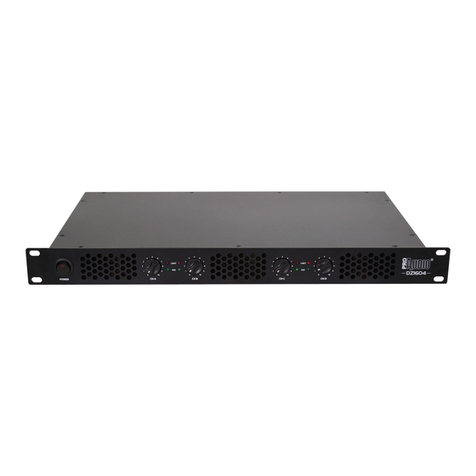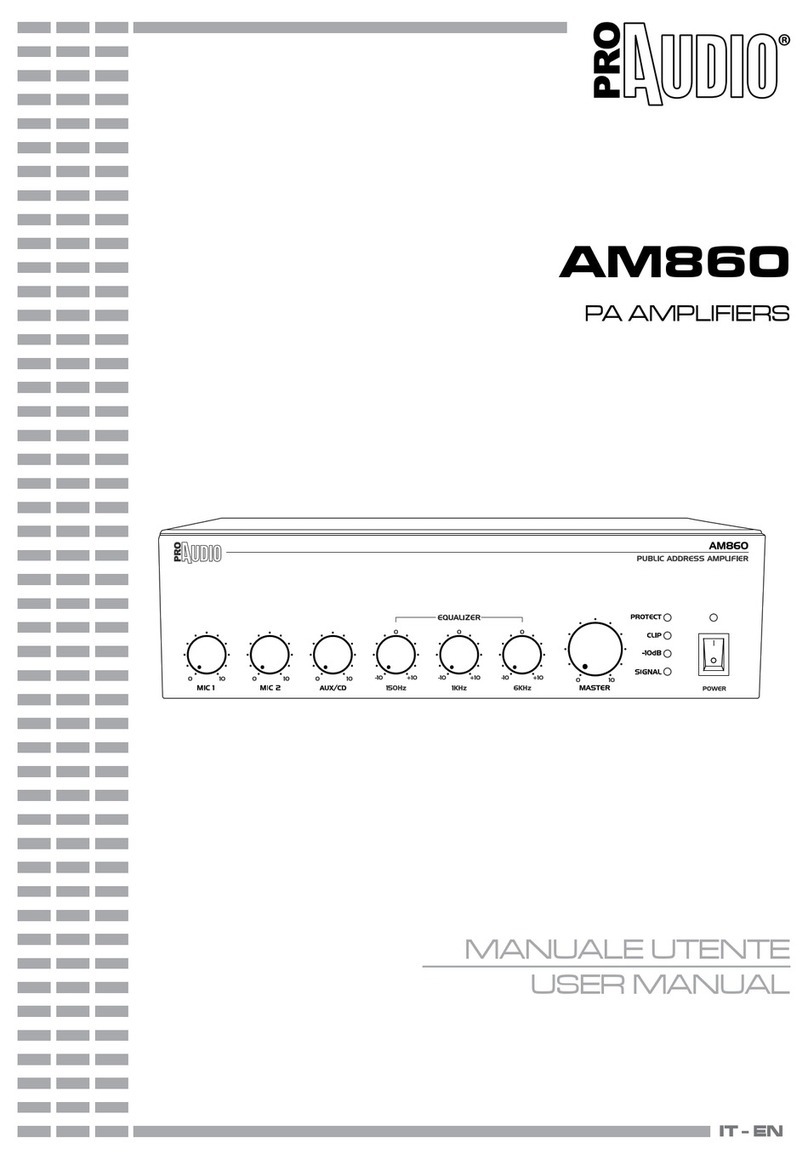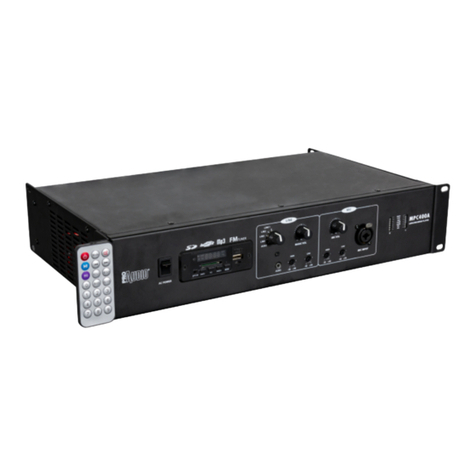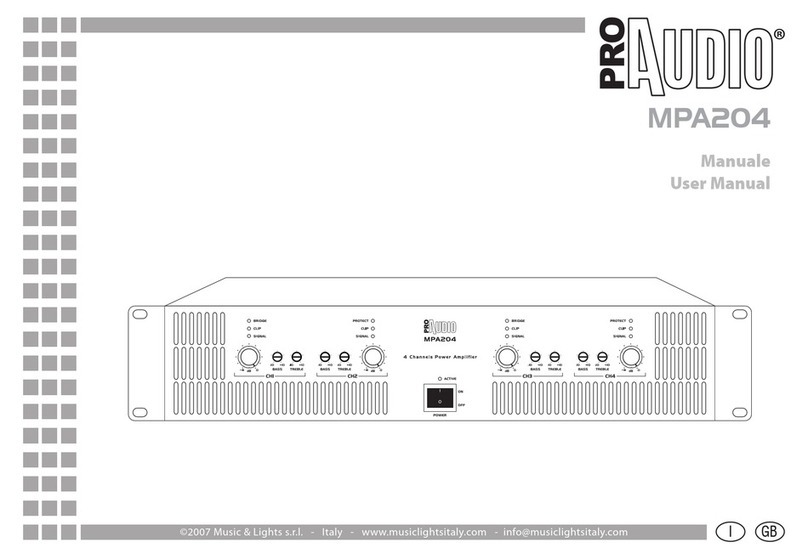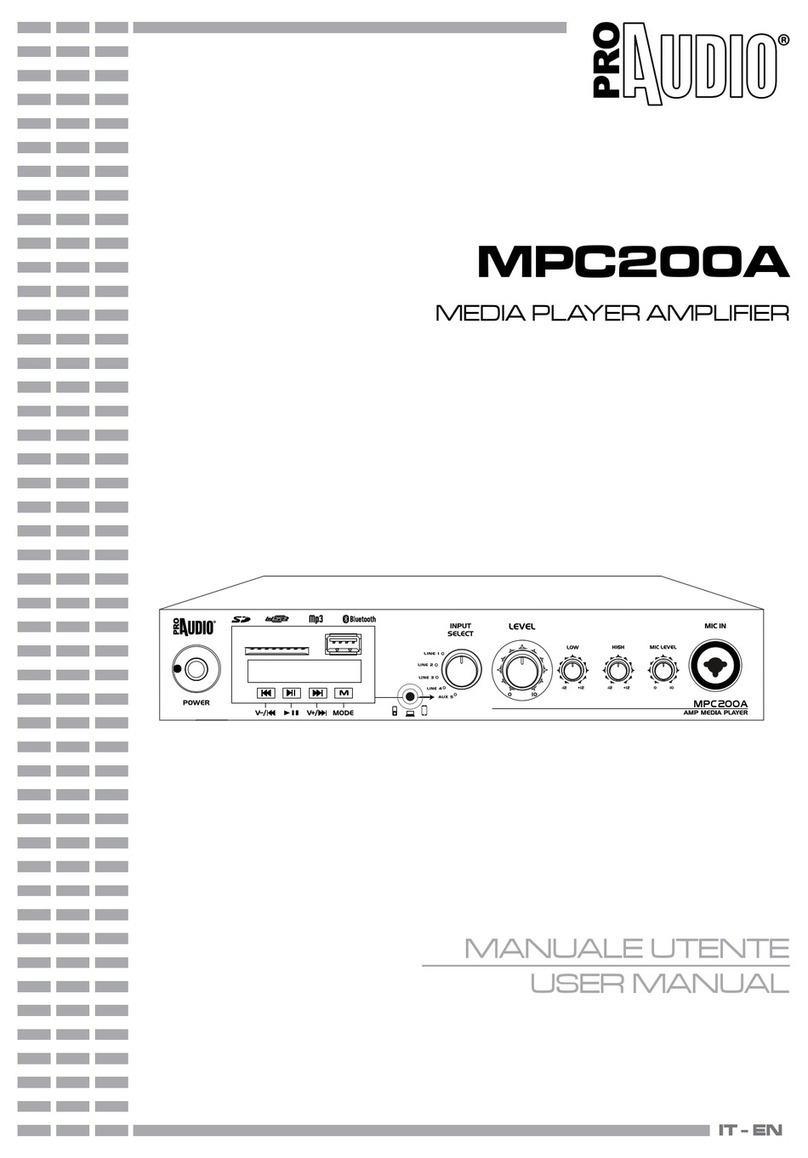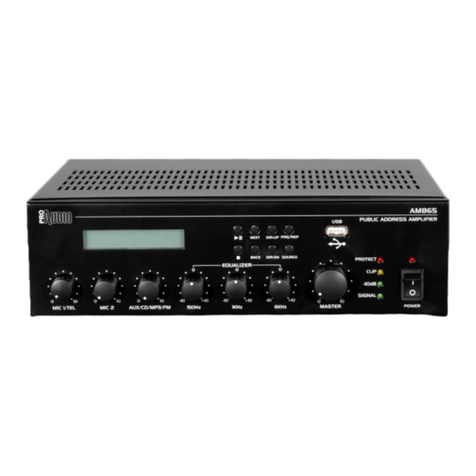
10 MPC1T ENIT
CRITERI GENERALI PER INSTALLAZIONE DI SISTE-
MI DI SONORIZZAZIONE
Premessa
Questa guida rappresenta una rapida introduzione
ai criteri per l’installazione di un sistema di sonoriz-
zazione a tensione costante o a impedenza costan-
te. L’impianto dovrà comunque essere realizzato da
personale qualicato, il quale dovrà valutare le esi-
genze dell’utilizzatore e le caratteristiche ambientali
degli spazi da sonorizzare, selezionare i diusori in
funzione dell’ambiente e del tipo di messaggio da
trasmettere (es. parlato/musica), identicare il mo-
dello di amplicatore idoneo a pilotare il complesso
dei diusori e dotato di un numero di ingressi ade-
guato, valutare il collegamento per i diusori e de-
terminare la sezione dei cablaggi.
L’impianto a tensione costante
In tema di selezione e collegamento dei diusori, è
necessario valutare se utilizzare normali diusori a
4/8/16Ohm o diusori con trasformatore. La deci-
sione in genere è condizionata dalla destinazione
dell’impianto (supermercato, discoteca, pub, abi-
tazione, ...) e dal numero di diusori da utilizzare.
I diusori a tensione costante vengono impiegati
generalmente per tutte quelle situazioni in cui sia
necessario installare numerosi diusori di bassa
potenza per una distribuzione audio omogenea e a
basso volume. Il classico esempio è quello dall’aere-
oporto o del supermercato. In queste situazioni di
solito vengono infatti posizionati numerosi altopar-
lanti a breve distanza tra loro, con un volume tale da
non disturbare ma con una frequenza tale da copri-
re tutta l’area desiderata con la medesima pressione
sonora.
Differenze tra impianti 4/8/16 Ohms e impianti a
tensione costante
Gli impianti a 4/8/16Ohm sono condizionati da pro-
blemi di impedenze:
• diusori collegati in “serie” sommano le loro im-
pedenze (es. 4Ohm + 4Ohm = 8Ohm)
• diusori collegati in “parallelo” dividono l’impe-
denza (es. 8Ohm // 8Ohm = 4Ohm)
Nella gure successive sono riportati alcuni
esempi di collegamento: serie, parallelo, serie
+ parallelo. E’ riportata anche la potenza ap-
plicabile in base al tipo di altoparlanti e alle
impedenze di ciascuno. In prossimità degli al-
toparlanti sono riportate le corrette polarità.
Gli impianti a tensione costante utilizzano invece
GENERAL CRITERIA FOR INSTALLATION OF
SOUND SYSTEMS
Introduction
This guide represents a quick introduction to the
criteria for the installation of a sound system at con-
stant voltage or constant impedance.
A sound system must be made by qualied person-
nel only, who must evaluate the needs of the user
and the environmental characteristics of the spaces
to be covered, select the speakers according to the
spaces and the type of message to be broadcasted
(ie: speech / music ), identify the suitable amplier
model to drive the complex of all the speakers and
having an adequate number of inputs, evaluate the
proper connection for the speakers and determine
the section of the wiring.
Constant voltage systems
In terms of selection of speakers and their connec-
tion it’s necessary to evaluate whether to use normal
speakers with 4/8/16Ohm impedance or speakers
with transformer. The decision is usually inuenced
by the destination of the system (supermarket, disco
, pub, house, ...) and by the number of speakers to
employ. Constant voltage speakers are normally
used into situations where it is necessary to install
several speakers with low power to get a homoge-
neous distribution of audio and overall low volume.
The classic example is the sound installation in air-
ports or supermarkets. In these situations several
speakers are usually placed within a short distance
between them, normally a volume low enough to
not disturb and a frequency covering the entire area
with same sound pressure.
Differences between 4/8/16 Ohms systems and
constant voltage systems
The 4/8/16Ohm systems are aected by problems of
impedances:
• speakers connected in “series” mode add their
impedance (example: 4Ohm + 4Ohm = 8Ohm)
• speakers connected in “parallel” mode divide
their impedance (example: 8Ohm // = 8Ohm
4Ohm)
In the following pictures nd a few examples
of connections: series, parallel, series + paral-
lel. Also the applicable power is reported ac-
cording to type and impedance of each speaker.
Please note polarity indicated for each speaker.
Constant voltage systems use speakers equipped

